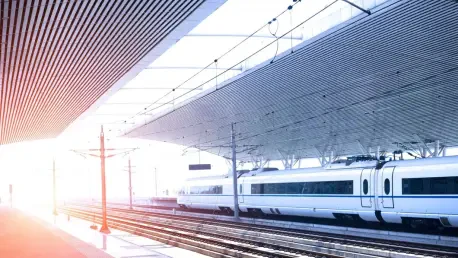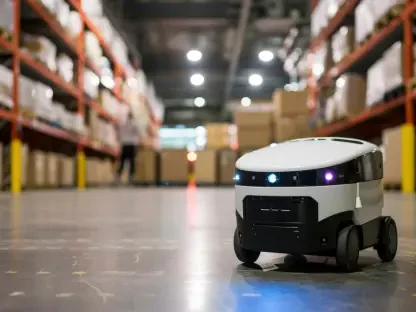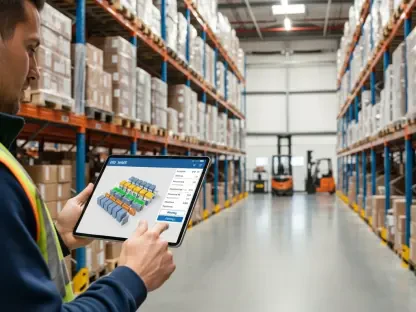As we dive into the latest developments in public transportation, I’m thrilled to speak with Rohit Laila, a seasoned expert in the logistics industry with decades of experience in supply chain and delivery. Rohit’s passion for technology and innovation in transportation makes him the perfect person to unpack the Massachusetts Bay Transportation Authority’s (MBTA) recent milestone of securing $850 million in funding for critical projects, including new commuter rail locomotives and system upgrades. Today, we’ll explore how this investment will transform rail reliability, modernize infrastructure, and advance sustainability goals for one of the busiest transit systems in the United States.
How did the MBTA secure this impressive $850 million from the Commonwealth Transportation Fund, and who played a pivotal role in pushing it through?
The funding came through an Interdepartmental Service Agreement with MassDOT, which was a collaborative effort backed by strong leadership. Governor Maura Healey proposed this significant investment, and it was endorsed by the Massachusetts Legislature. The MBTA and MassDOT Boards both gave their approval, marking a unified commitment to improving public transit. This kind of alignment across state agencies and political leaders was crucial to making this happen, showing how much priority is being placed on modernizing the system for riders and communities.
What makes this funding such a game-changer for the MBTA’s mission to serve the public?
This $850 million is a lifeline for the MBTA’s overarching goal of delivering safe, reliable, and accessible transportation. It’s not just about patching up issues—it’s a strategic push to rebuild trust with riders by addressing long-standing challenges like equipment failures and outdated infrastructure. This investment signals a shift toward a more resilient transit system that can meet the needs of current and future generations, supporting everything from daily commutes to economic growth in the region.
Why is replacing the aging commuter rail locomotives such a top priority with this funding?
The current fleet of locomotives has been a persistent headache for the MBTA. Many of them are well past their prime, leading to frequent breakdowns that disrupt service and frustrate riders. Prioritizing their replacement is about getting back to basics—ensuring trains run on time and passengers can depend on the system. It’s a foundational step to restore confidence in commuter rail and improve the day-to-day experience for thousands of people.
How do you expect the new locomotives to enhance reliability and efficiency across the network?
New locomotives will be a breath of fresh air for the system. They’re designed with modern technology that cuts down on mechanical failures, meaning fewer delays and cancellations. They’ll also be more energy-efficient, reducing operational costs over time. For riders, this translates to smoother, more predictable trips, while for the MBTA, it means a more streamlined operation that can handle growing demand without constant hiccups.
Can you shed some light on the MBTA’s Rail Reliability Program and its broader objectives?
The Rail Reliability Program is the MBTA’s long-term vision for a commuter rail network that doesn’t just limp along but thrives. It’s focused on upgrading both infrastructure and equipment to prevent the kind of service disruptions that have plagued the system for years. The program aims to create a more robust network through fleet modernization, track improvements, and better maintenance practices, ensuring that reliability isn’t just a buzzword but a lived reality for riders.
Beyond locomotives, this funding supports Green Line upgrades. What can riders expect from these changes?
The Green Line upgrades are about bringing an aging line into the modern era. We’re talking about revamped signals, reconfigured tracks, and facility improvements to accommodate new Type 10 vehicles. These changes will allow for increased service frequency, meaning shorter wait times and less crowding. For riders, it’s going to feel like a significant step up—faster, more comfortable trips with fewer delays caused by outdated systems.
Another exciting project is the Widett Regional Rail Layover Facility. What’s the vision behind this development?
The Widett Facility is a key piece of the puzzle for modernizing commuter rail operations. Phase 1 involves preparing a site for a six-track electrified layover area, which will support Battery Electric Multiple Units and pave the way for the Fairmount Line electrification. It’s essentially a hub for storing and maintaining trains, ensuring they’re ready to roll when needed. This facility will boost operational flexibility and support the MBTA’s shift toward cleaner, more sustainable technology.
The Arborway Battery Electric Bus Facility is also part of this funding. How does it contribute to the MBTA’s goals?
This facility is a big leap toward a greener future for the MBTA. It’s designed to store and maintain around 200 battery electric buses, which is a substantial commitment to reducing emissions in the transit system. By transitioning to electric buses, the MBTA is cutting down on its carbon footprint while providing quieter, cleaner rides for passengers. It’s a critical part of their broader sustainability strategy, aligning with state and regional environmental targets.
With safety, reliability, accessibility, and resilience as key themes of this investment, can you highlight a specific improvement that stands out to you?
I think the focus on accessibility really resonates. While specifics weren’t detailed in the announcement, the commitment to resilience and accessibility suggests upgrades like better station designs and more inclusive infrastructure for people with disabilities. Pair that with reliability improvements from new locomotives and signal upgrades, and you’ve got a system that doesn’t just work better but works for everyone. It’s a holistic approach that addresses both technical and human needs.
Looking ahead, what’s your forecast for the future of public transit systems like the MBTA with investments like this one?
I’m optimistic that investments like this are setting the stage for a renaissance in public transit. With funding focused on modernization and sustainability, systems like the MBTA can become more than just a way to get around—they can be economic engines and environmental leaders. I foresee a future where technology, like electric buses and smarter rail systems, becomes the norm, and reliability issues become a distant memory. If this momentum continues, we could see transit systems that truly rival the best in the world, serving as a backbone for thriving, connected communities.









